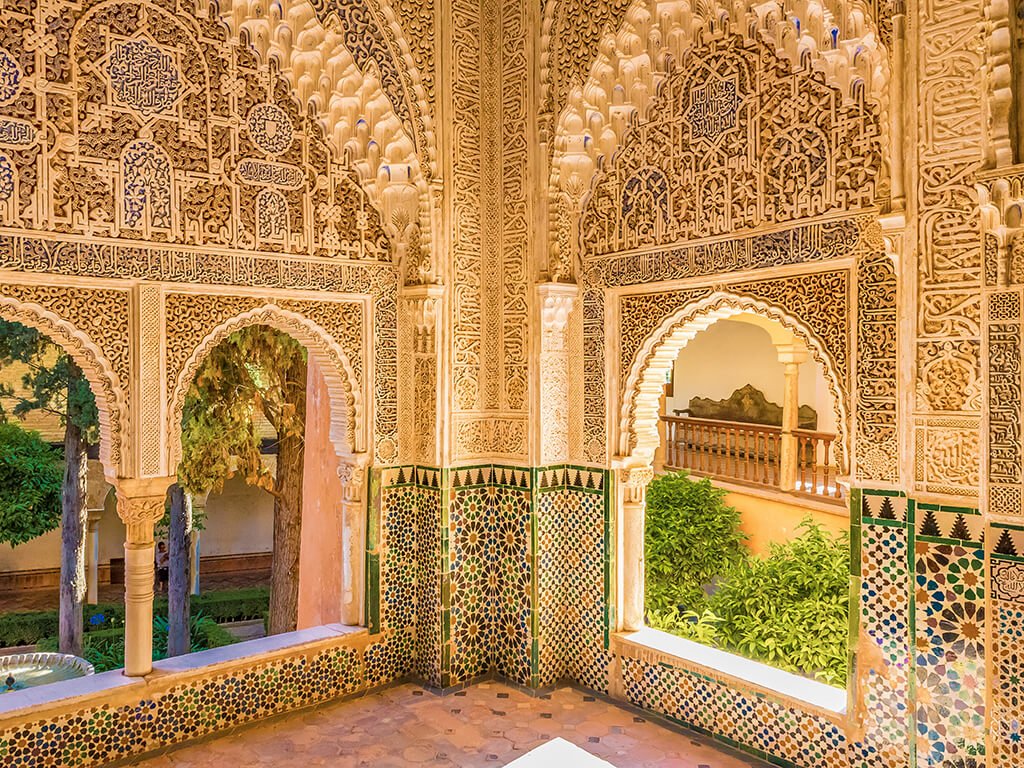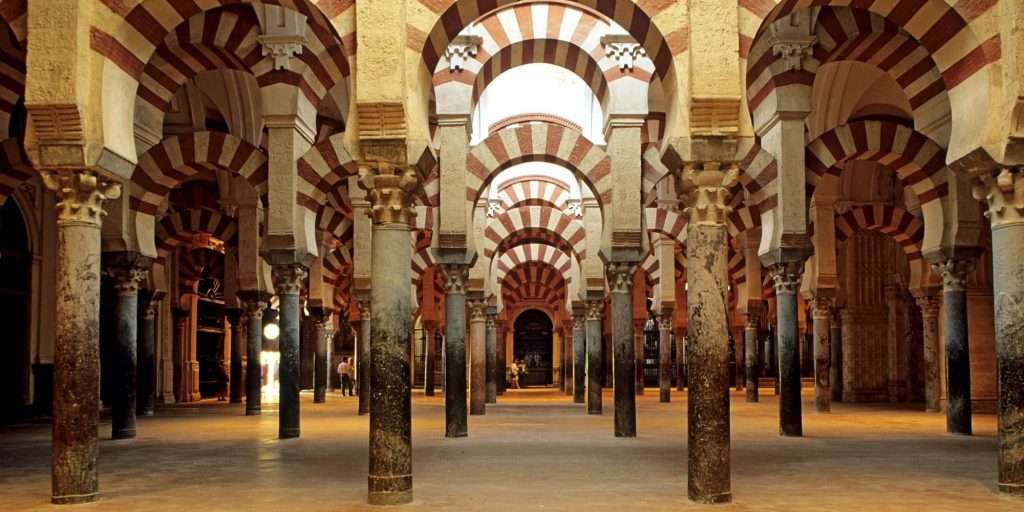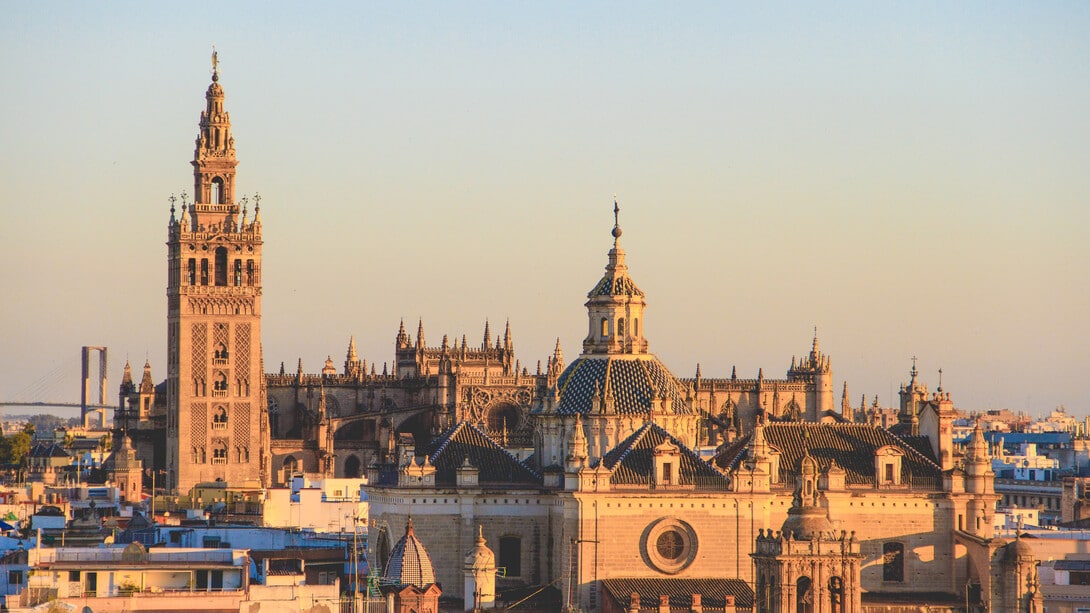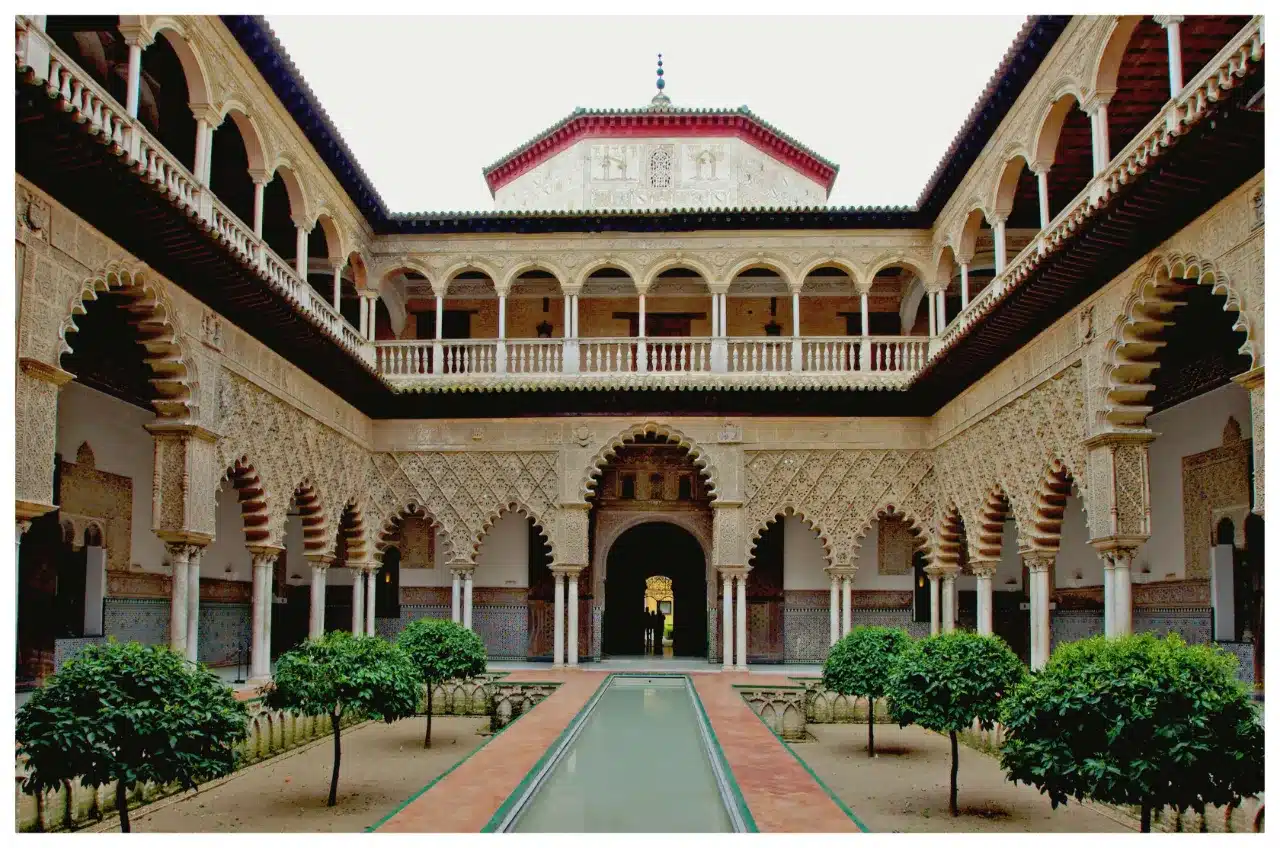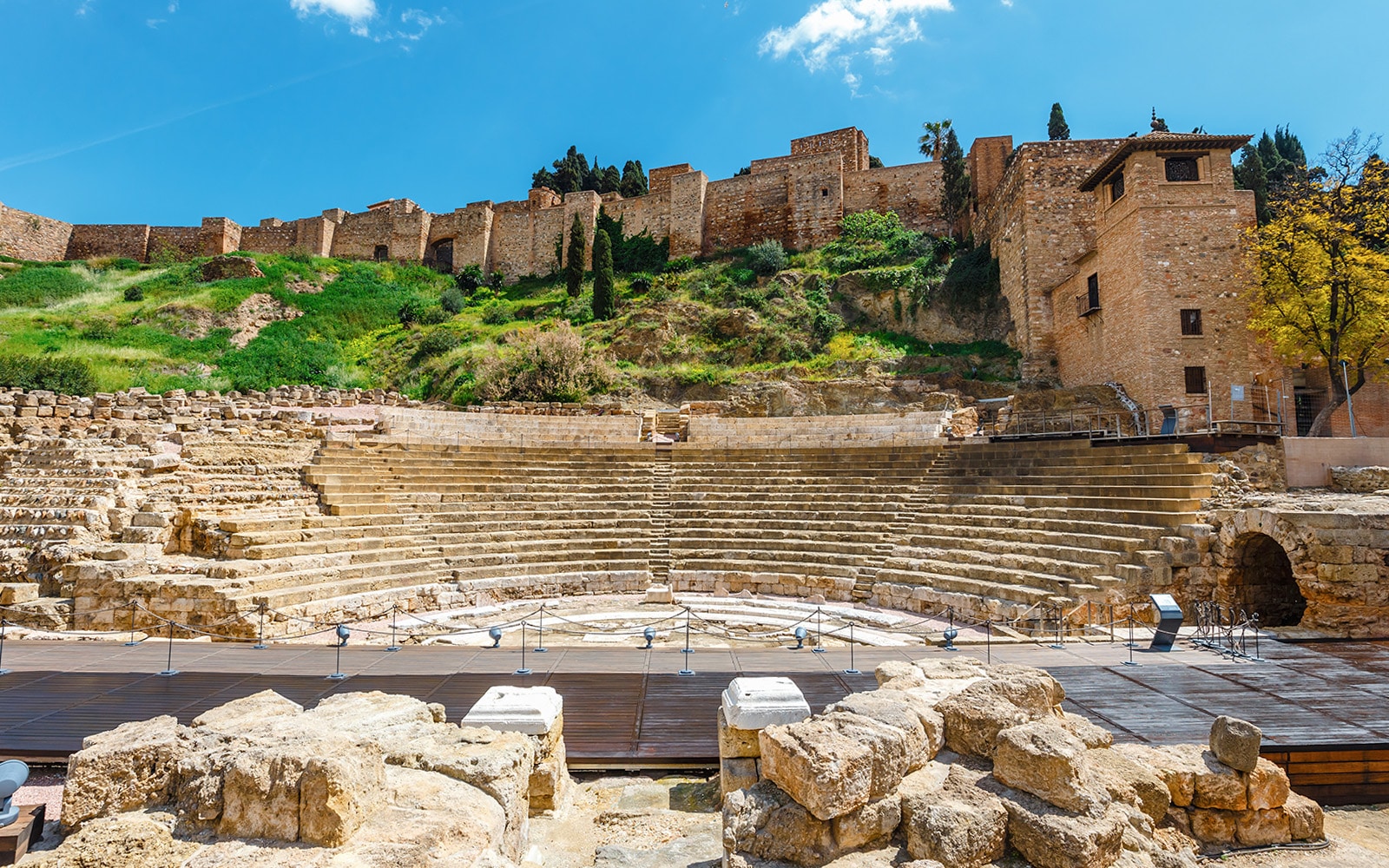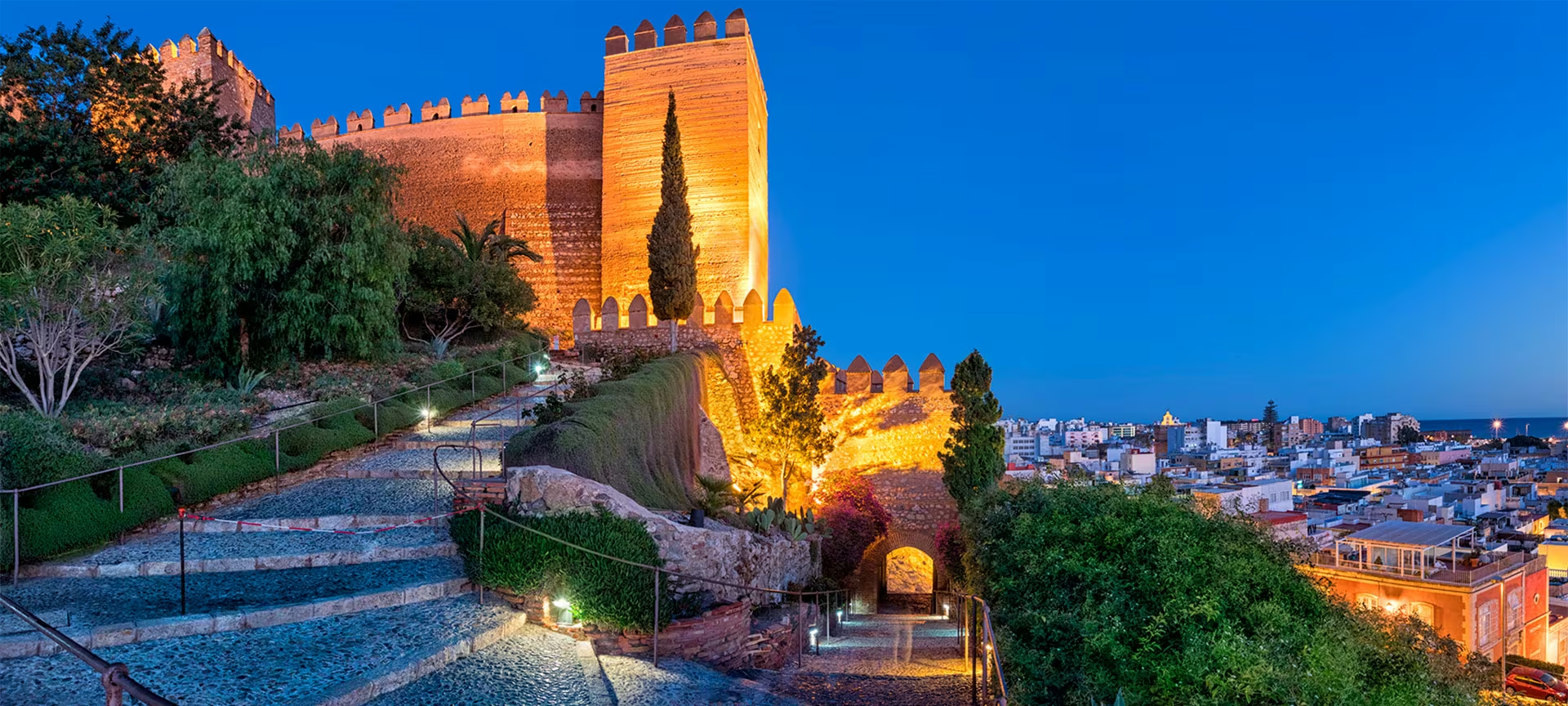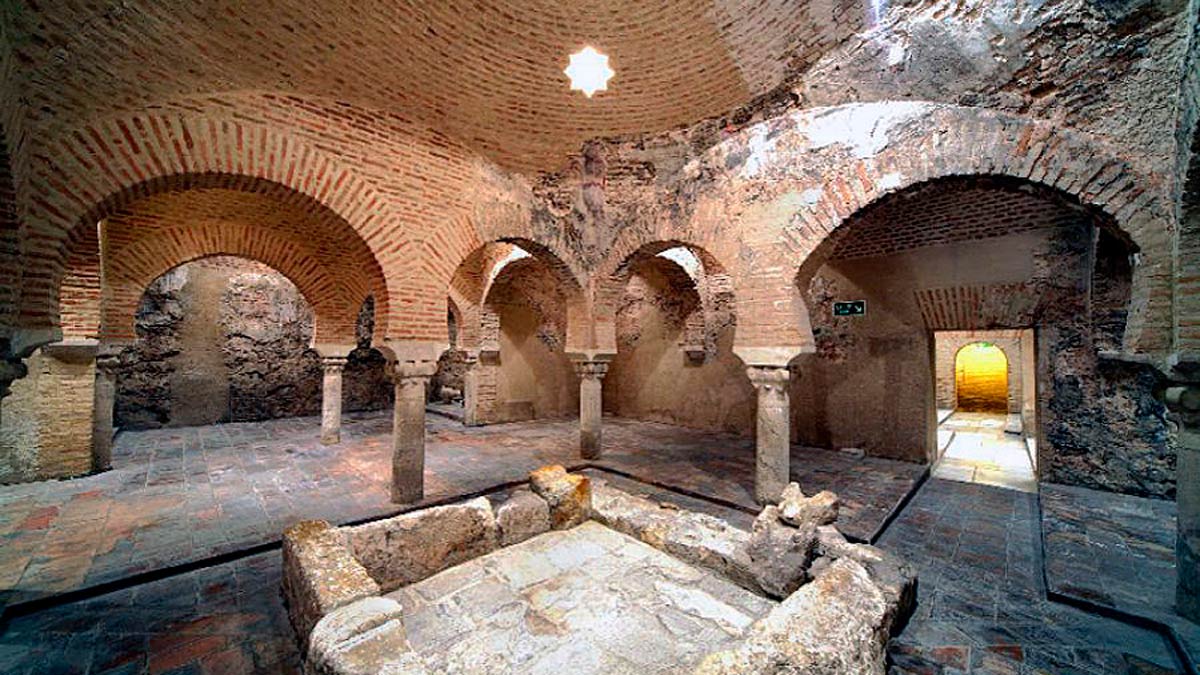Andalucia was under Muslim rule for nearly 800 years and this important period has left a massive legacy behind across the region. Spanish food, language and culture all are heavily influenced by this history and you can see it when you watch flamenco, marvel at the architecture and enjoy local customs.
The palaces, mosques, minarets and hammams of Andalucia are beautiful and many are deemed so important that they are UNESCO World Heritage Sites. Touring these sites during a holiday is a great way to immerse yourself in the region’s past and better understand why things are the way they are today.
Here are some of the must see monuments to visit.
Granada’s Alhambra
The Alhambra is not just a monument—it’s a masterpiece of Islamic architecture, a symbol of Andalusia’s rich multicultural past, and one of the most visited sites in all of Spain. It’s approximately two hours drive from Marbella.
Its history dates all the way back to the 9th century, when a small fortress was built. Its red coloured walls gave it the name the red one “Al-Hamra”, which over time became Alhambra.
It became the spectacular site that it is today in the 13th century when the Nasrid dynasty took the modest fortress and transformed it into a palace complex with exquisite halls, courtyards and gardens, making it into a jewel of Moorish art and architecture.
Thankfully it was not destroyed when the Catholic Monarchs took Granada and it became a royal residence and more stunning additions were made.
The Alhambra is a UNESCO World Heritage Site and one of the finest examples of Islamic architecture in Europe. Its intricate tilework, stucco carvings, and geometric designs are breathtaking. Its gardens are exquisite too.
Thanks to this history and beauty, it’s the most visited monument in Andalucia, which welcomed 2.7 million visitors in 2024. Due to its popularity, tickets need to be booked well in advance to ensure you get the date you want.
How to book a visit to The Alhambra?
Go to the website www.alhambra-patronato.es and choose what kind of visit you’d prefer. Tickets start at €12.73 and there are options to see all or just some of the complex during the day or at night. There are also many guides offering tours around the complex, so you can find out more about the history.
You need to choose a time slot for your booking. We recommend early morning or late afternoon to avoid crowds and enjoy softer lighting for photography. The night visits during summer are very dramatic as well.
Top Tips:
- Buy your tickets well in advance, even before you arrive in Spain; they tend to sell out very quickly.
- Wear comfortable shoes—there’s a lot of walking!
The Mosque of Córdoba
The Mosque-Cathedral of Córdoba (Mezquita-Catedral de Córdoba) is one of the most iconic and historically rich monuments in Spain and a UNESCO World Heritage Site. It’s just over two hours drive from Marbella.
It was originally the site of a Roman temple, later replaced by the Visigothic Basilica of St. Vincent. In 785 CE, Abd al-Rahman I began building the Great Mosque on this site and it became one of the most important religious structures in the Muslim world, second only to Mecca.
Under Abd al-Rahman III and Al-Hakam II, Córdoba flourished as a cultural and political capital. The mosque was expanded multiple times, reaching its peak in the 10th century.
After the Reconquista in 1236, King Ferdinand III converted the mosque into a Catholic cathedral. A Renaissance-style nave was added in the 16th century.
It’s a real architectural marvel and a beautiful place to visit. Highlights include the Hypostyle Hall, famous for its forest of red-and-white horseshoe arches supported by over 850 columns made of jasper, onyx, marble, and granite.
Don’t miss the richly decorated prayer niche, which is a masterpiece of Islamic art and the Cathedral Nave, showcasing Gothic, Renaissance, and Baroque styles which is an interesting juxtaposition with the Arabic architecture.
How to Book Your Visit
Visit the official website mezquita-catedraldecordoba.es to see all the ticket options and purchase tickets ahead of your visit.
It costs €13 for adults to visit all the areas of the complex. Reduced rates are available for seniors, students, and children and there’s free entry from 8:30 to 9:30 Monday to Saturday. There are also night guided tours for €20 per person.
This is a very popular tourist site, which limits numbers, so booking early is very important, especially during high season. To be safe, we recommend booking two weeks in advance if you need a particular date to correspond with your visit.
The Giralda of Seville
The Giralda is one of Seville’s most iconic landmarks—a soaring bell tower that blends Islamic and Christian architectural styles in a stunning display of history and artistry. It’s not just a monument—it’s a symbol of Seville’s identity and resilience, which is three hours by car from Marbella.
Originally built in the 12th century as the minaret of the Great Mosque of Seville under the Almohad dynasty, it was later transformed into a bell tower for the Seville Cathedral after the Christian Reconquista.
Alongside the Seville Cathedral and the Alcázar, the Giralda is part of a UNESCO-designated cultural treasure. The Giralda is a rare example of true architectural fusion. The lower two-thirds of the tower are Moorish, while the upper third is Renaissance, added in the 16th century. This stylistic blend makes it a rare and beautiful example of cultural convergence.
Located in the heart of the city and attached to the Seville Cathedral it’s a must visit destination. History buffs will be in paradise, as you’re literally walking through centuries of Seville’s evolution—from Islamic rule to Christian Spain. Not only that, but the cityscape from the top is breathtaking, especially at sunset.
How to Book Your Visit
Go to the website https://www.catedraldesevilla.es/ to book your tickets ahead of time, to avoid queues and lack of availability and for a reduced rate. Tickets cost €13 each to visit the cathedral and the Giralda, with under 13s free. There are also audio guides available for €5. It’s free to visit on a Sunday between 16.30 and 18.00, but slots must still be booked.
The Royal Alcázar, Seville
While you’re in Seville to see the Giralda and the Cathedral, we highly recommend visiting the Royal Alcázar of Seville. This is a breathtaking palace complex in Seville, renowned for its architectural splendour and deep historical roots. It’s one of the oldest royal palaces still in use in Europe and a UNESCO World Heritage Site.
Originally a Moorish fort built in the 10th century, it evolved into a royal palace after the Christian conquest of Seville in 1248 and the Spanish royal family still uses the upper floors as their official residence when visiting Seville.
The Alcázar is a masterpiece of Mudéjar architecture—a unique blend of Islamic and Christian styles. It also features Gothic, Renaissance, and Baroque elements added over centuries.
Highlights include; the Gothic Palace, the Renaissance additions and the Mudéjar marvels and the Patio de las Doncellas, a courtyard with intricate arches and reflecting pools. We love the lush, maze-like gardens with fountains and exotic plants.
How to Book Tickets
Advance Booking is highly recommended, as daily visitor numbers are limited and time-slot reservations are required. Go to the Real Alcázar’s official ticket portal and choose your ticket type, date and time slot.
General admission to the ground floor and gardens is €15.50, you can also book to see the Royal apartments and add on a guided tour or audio guide.
Mondays are free, but slots must be booked.
Tickets can be booked at the ticket office on the Patio de Banderas, for the same day, but availability is often limited.
The Alcazaba of Málaga
The Alcazaba of Málaga is a beautiful fortress complex, with Moorish arches, fortified walls, and serene courtyards that reflect Islamic design. It’s one of the best-preserved alcazabas in Spain and offers insight into Andalusian history. Its elevated position also offers stunning views of Málaga’s harbour and city. It’s just an hour from Marbella, and you can combine a visit with shopping, art and great food.
Its history stretches back to the Phoenicians and Romans, due to its strategic location near the sea. Archaeological remains of Roman dwellings have been found on its slopes and adjacent to the Alcazaba is a Roman theatre, adding another layer of historical intrigue to your visit.
The Alcazaba was built in the 11th century during the Taifa period, after the fall of the Caliphate of Córdoba. It was commissioned by the Hammudid dynasty, rulers of the Taifa of Málaga. It served both military and governmental purposes, acting as a fortress and palace for Muslim rulers.
The structure underwent significant restoration in the 20th century, preserving its medieval architecture and enhancing its accessibility.
You can also visit the nearby Castillo de Gibralfaro for a deeper dive into Málaga’s military history.
How to book tickets
Go to the official website of Alcazaba y Castillo de Gibralfaro and choose your ticketing option. General admission to the Alcazaba is €7, or you can choose a combined ticket including the Gibralfaro Castle for €10. There are reduced prices for students and seniors and children under 6 go free. It’s free to visit on Sundays after 2pm.
The Alcazaba of Almería
The Alcazaba of Almería is a stunning 10th century fortress perched on a hill overlooking the city and the Mediterranean Sea. Built by Caliph Abd al-Rahman III in 955 CE, it’s one of the largest Muslim fortresses in Spain—second only to the Alhambra in Granada, which is just under three hours from Marbella by car.
It’s a key monument of Islamic architecture in the Iberian Peninsula, showcasing centuries of history from Muslim rule to Christian conquest. The complex includes three enclosures with cisterns, palatial ruins, watchtowers, and a Christian castle added after the Reconquista. Verdant gardens and water features offer a tranquil escape, echoing the Islamic tradition of paradise gardens. Plus, from its towers and walls, you’ll enjoy breathtaking views of Almería, the bay, and the surrounding landscape.
It is free to visit for EU citizens and €1.50 for visitors from other countries. It is open Tuesdays-Saturdays 9am to 6pm from September to March, with extended hours in spring and summer, and Sundays 9am to 3pm throughout the year. Check the official website os Alcazaba de Almería for timings and further information. There are free guided tours every Saturday at 9am, which can be booked by emailing [email protected]
While you’re there, you can also visit Europe’s only true desert, the Tabernas Desert which is the location for many Westerns.
Arab Baths of Jaén
The Arab Baths of Jaén (Baños Árabes de Jaén) are among the largest and best-preserved examples of Islamic bathhouses in Spain, offering a fascinating glimpse into Andalusi architecture and culture. They were built in 1002, during the final years of the Caliphate of Córdoba, over the remains of Roman baths.
After the Christian conquest in 1246, the baths were used briefly before being converted into tanneries and then hidden from view in the 16th century, when a palace was built on top of them.
They were only rediscovered in 1913, and declared a Cultural Heritage Property of Spain in 1931, with major restorations completed by 1982.
The bathhouse includes four main rooms:
- Bayt al-maslaj (Changing Room): White marble floor, 18 star-shaped skylights.
- Bayt al-barid (Cold Room): Barrel vault with 15 skylights.
- Bayt al-wasti (Warm Room): Large dome supported by eight columns—one of the largest warm rooms in Andalusi bathhouses.
- Bayt al-sajun (Hot Room): Closest to the boilers, with hidden chambers for circulating hot air.
How to visit?
The Baños Árabes Cultural centre is situated in the heart of Jaén, inside the Renaissance-era Villardompardo Palace. Entry is free and they are open Tuesday to Saturday and on bank holidays from 9am to 9pm and from 9am to 3pm on Sundays. Bookings are not required.
During the visit you can tour the Arab Baths, The Museum of Art and Popular Customs and the Naïf Art Museum.
Where to stay to visit the Arab-Andalusian heritage of Andalusia?
These are the most important sites of historical interest from the Moorish era, but you will see smaller sites all over the region. Marbella is a great place to base yourself to explore these sites, as it’s centrally located, with sites to the east and west and no more than three hours of driving.
Not only does Marbella make sense as a destination because of its location, but you can also combine these day trips with some rest and relaxation. One day of sightseeing, followed by a Marbella day to relax on our beautiful beaches, enjoy our great restaurants and shopping, before another day trip is an excellent way to balance your holiday.
Plus, if you’re staying in a holiday rental villa in Marbella, these stunning places are just a few hours away!
Find out about day trips from Marbella for more recommendations or browse our vacation rental properties in Marbella on our website.

